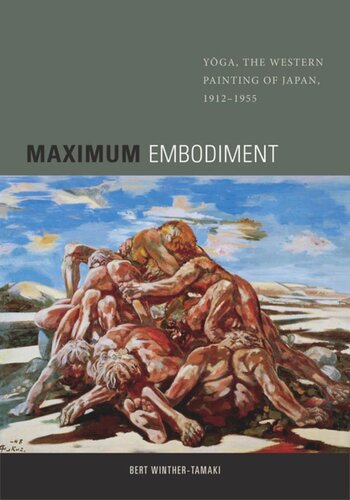

Most ebook files are in PDF format, so you can easily read them using various software such as Foxit Reader or directly on the Google Chrome browser.
Some ebook files are released by publishers in other formats such as .awz, .mobi, .epub, .fb2, etc. You may need to install specific software to read these formats on mobile/PC, such as Calibre.
Please read the tutorial at this link: https://ebookbell.com/faq
We offer FREE conversion to the popular formats you request; however, this may take some time. Therefore, right after payment, please email us, and we will try to provide the service as quickly as possible.
For some exceptional file formats or broken links (if any), please refrain from opening any disputes. Instead, email us first, and we will try to assist within a maximum of 6 hours.
EbookBell Team

4.0
96 reviewsMaximum Embodiment presents a compelling thesis articulating the historical character of Yoga, literally the “Western painting” of Japan. The term designates what was arguably the most important movement in modern Japanese art from the late nineteenth to the mid-twentieth centuries. Perhaps the most critical marker of Yoga was its association with the medium of oil-on-canvas, which differed greatly from the water-based pigments and inks of earlier Japanese painting. Yoga encompassed both establishment fine art and avant-gardist insurgencies, but in both cases, as the term suggests, it was typically focused on techniques, motifs, canons, or iconographies that were obtained in Europe and deployed by Japanese artists.
Despite recent advances in Yoga studies, important questions remain unanswered: What specific visuality did the protagonists of Yoga seek from Europe and contribute to modern Japanese society? What qualities of representation were so dearly coveted as to stimulate dedication to the pursuit of Yoga? What distinguished Yoga in Japanese visual culture? This study answers these questions by defining a paradigm of embodied representation unique to Yoga painting that may be conceptualized in four registers: first, the distinctive materiality of oil paint pigments on the picture surface; second, the depiction of palpable human bodies; third, the identification of the act and product of painting with a somatic expression of the artist’s physical being; and finally, rhetorical metaphors of political and social incorporation. The so-called Western painters of Japan were driven to strengthen subjectivity by maximizing a Japanese sense of embodiment through the technical, aesthetic, and political means suggested by these interactive registers of embodiment.
Balancing critique and sympathy for the twelve Yoga painters who are its principal protagonists, Maximum Embodiment investigates the quest for embodiment in some of the most compelling images of modern Japanese art. The valiant struggles of artists to garner strongly embodied positions of subjectivity in the 1910s and 1930s gave way to despairing attempts at fathoming and mediating the horrifying experiences of real life during and after the war in the 1940s and 1950s. The very properties of Yoga that had been so conducive to expressing forceful embodiment now produced often gruesome imagery of the destruction of bodies. Combining acute visual analysis within a convincing conceptual framework, this volume provides an original account of how the drive toward maximum embodiment in early twentieth-century Yoga was derailed by an impulse toward maximum disembodiment.